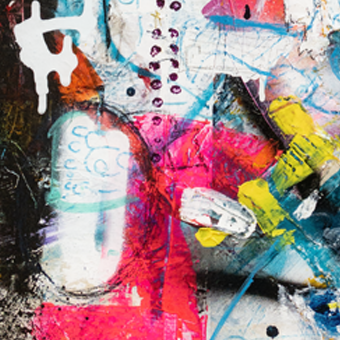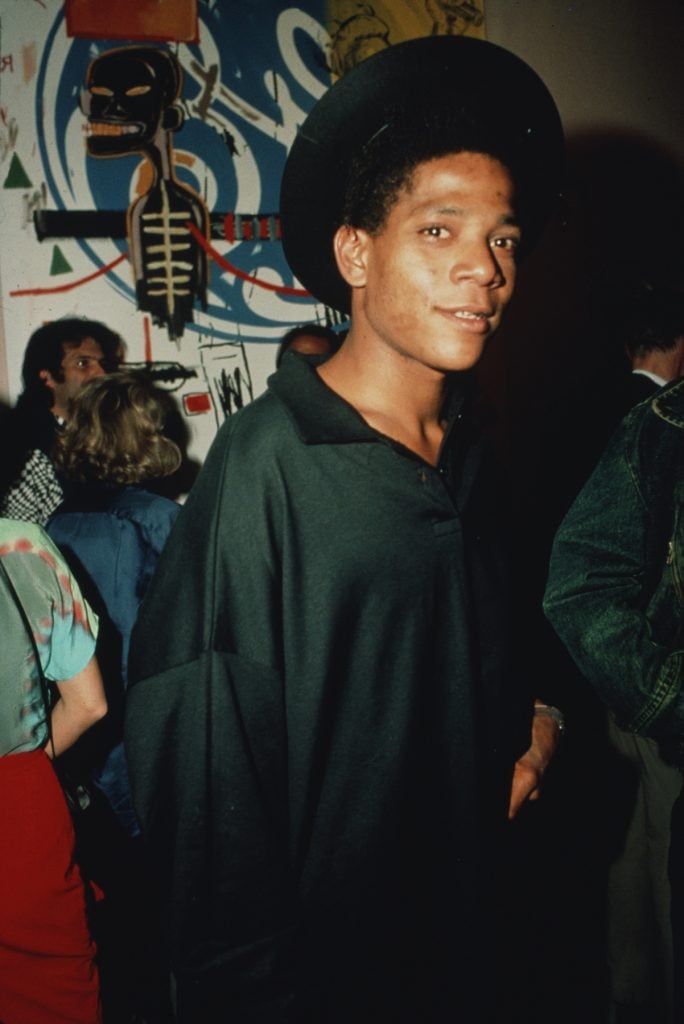
Disrespecting the Legacy: Street Artist Keeps Whitewashing the Graffiti at Basquiat’s Former Studio
Share

As someone deeply immersed in the world of contemporary art, I have always held a profound respect for the transformative power of graffiti art. It is a form of expression that has the ability to transcend boundaries, tell stories, and capture the essence of urban life like no other. In this world, the name Jean-Michel Basquiat is synonymous with innovation and trailblazing creativity. His legacy is a testament to the impact of black artists in the realm of contemporary art.
It's no surprise then, that the recent news of a street artist persistently whitewashing the graffiti at Basquiat's former studio has left me in a state of disbelief and disappointment. This act of defacement not only disrespects the memory of an artistic genius but also highlights a concerning aspect of the evolving street art culture.
The Power of Graffiti Art
Graffiti art is a genre that has its roots deeply embedded in the streets, where artists use public spaces as their canvas to communicate their thoughts, feelings, and social commentary. Basquiat himself was a graffiti artist before his meteoric rise to fame in the contemporary art world. His journey from the streets to the elite galleries of New York City is a testament to the power and potential of this art form.
Graffiti, in its essence, is a reflection of the cultural, social, and political dynamics of the urban environment. It represents the voice of the marginalized, the dispossessed, and those who often go unheard. When artists like Basquiat broke through into the mainstream art world, they carried with them the raw energy and authenticity of the streets.
Basquiat's Enduring Influence
Jean-Michel Basquiat was not just an artist; he was a cultural icon whose work continues to inspire generations of artists. His ability to blend graffiti, abstract art, and abstract expressionism into a unique and captivating style set him apart. Basquiat's paintings were vibrant, emotionally charged, and often contained profound social commentary on race, identity, and society.
His influence can be seen in contemporary art movements, particularly in the works of African American artists who draw inspiration from his legacy. Basquiat's art challenged the status quo and broke down barriers, making it possible for artists of color to have a significant impact on the art world.
The Disrespectful Act
To understand the gravity of the situation, we need to delve into the specifics of the ongoing act of defacement at Basquiat's former studio. The studio, located in the heart of New York City's Greenwich Village, holds historical significance as the place where the artist spent his final days before his untimely death in 1988. This sacred space has been a site of pilgrimage for art enthusiasts, historians, and admirers of Basquiat's work.
However, the tranquility and respect that should naturally surround this place have been disrupted by a street artist who seems to view the studio as an empty canvas for their own expression. The act of whitewashing the graffiti, which had been carefully and lovingly created by admirers and fellow artists, is an affront to the memory of Basquiat.
The Evolution of Street Art
Street art has evolved over the years, transitioning from being seen as mere vandalism to a respected form of artistic expression. Street artists have gained recognition in galleries and auctions, their works fetching substantial prices. This evolution has been largely driven by artists like Basquiat who bridged the gap between street and contemporary art.
However, the act of whitewashing the graffiti at Basquiat's studio raises important questions about the direction in which street art is headed. While the street art movement has gained mainstream acceptance, it is crucial to remember its roots and the importance of preserving its authenticity.
Preserving the Legacy
I implore the street artist responsible for this act of defacement to reconsider their actions. There are countless walls and spaces in the city where their art can find a home, spaces that are not steeped in the history and memory of an artist who gave so much to the world.
In the grand tapestry of contemporary art, graffiti art and street art have played an indispensable role. They have challenged conventions, ignited conversations, and given a voice to the marginalized. Basquiat's journey from the streets to the studio symbolizes the transformative power of art.
As we continue to evolve in the world of art, it is essential that we pay homage to those who blazed the trail and broke down barriers. Basquiat's legacy should be celebrated and protected, not marred by thoughtless acts of vandalism.
In conclusion, the ongoing whitewashing of graffiti at Basquiat's former studio is a disheartening reminder of the need to preserve and respect our artistic heritage. It is a call to action for all of us to protect the sanctity of spaces that hold cultural and historical significance. Let us remember the power of graffiti art, the influence of Jean-Michel Basquiat, and the importance of respecting the past as we shape the future of contemporary art.

